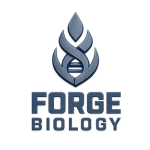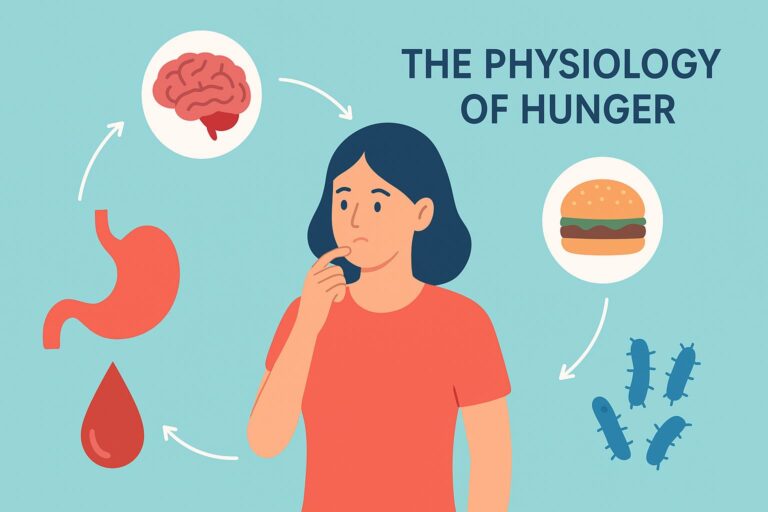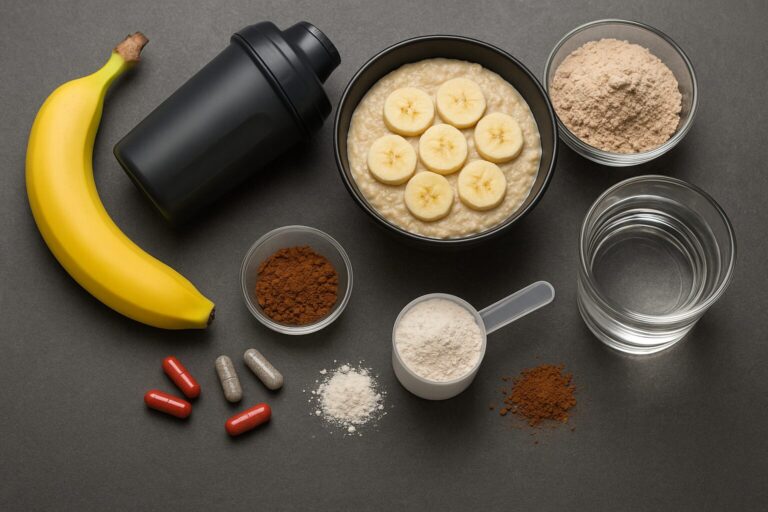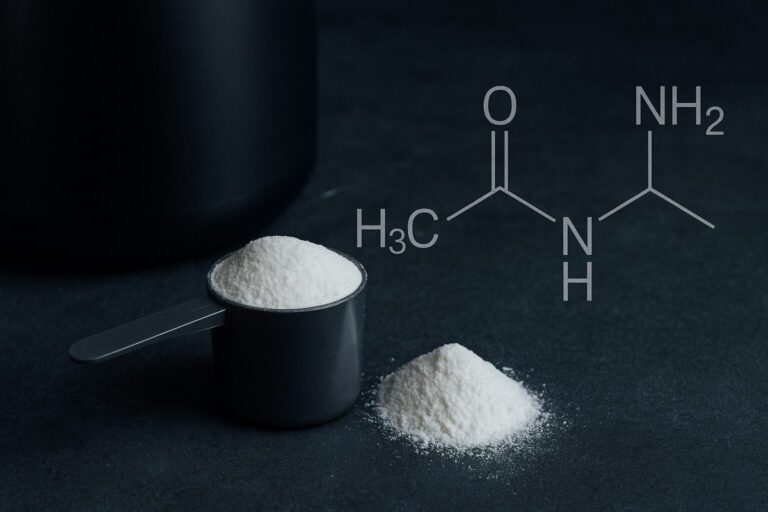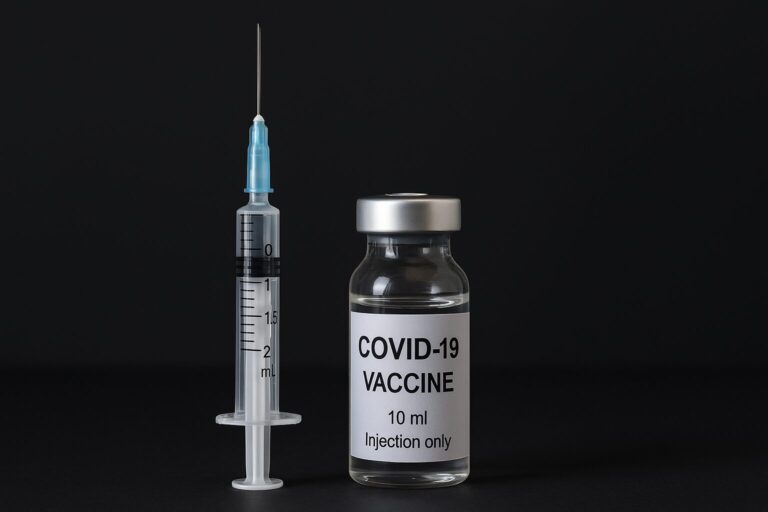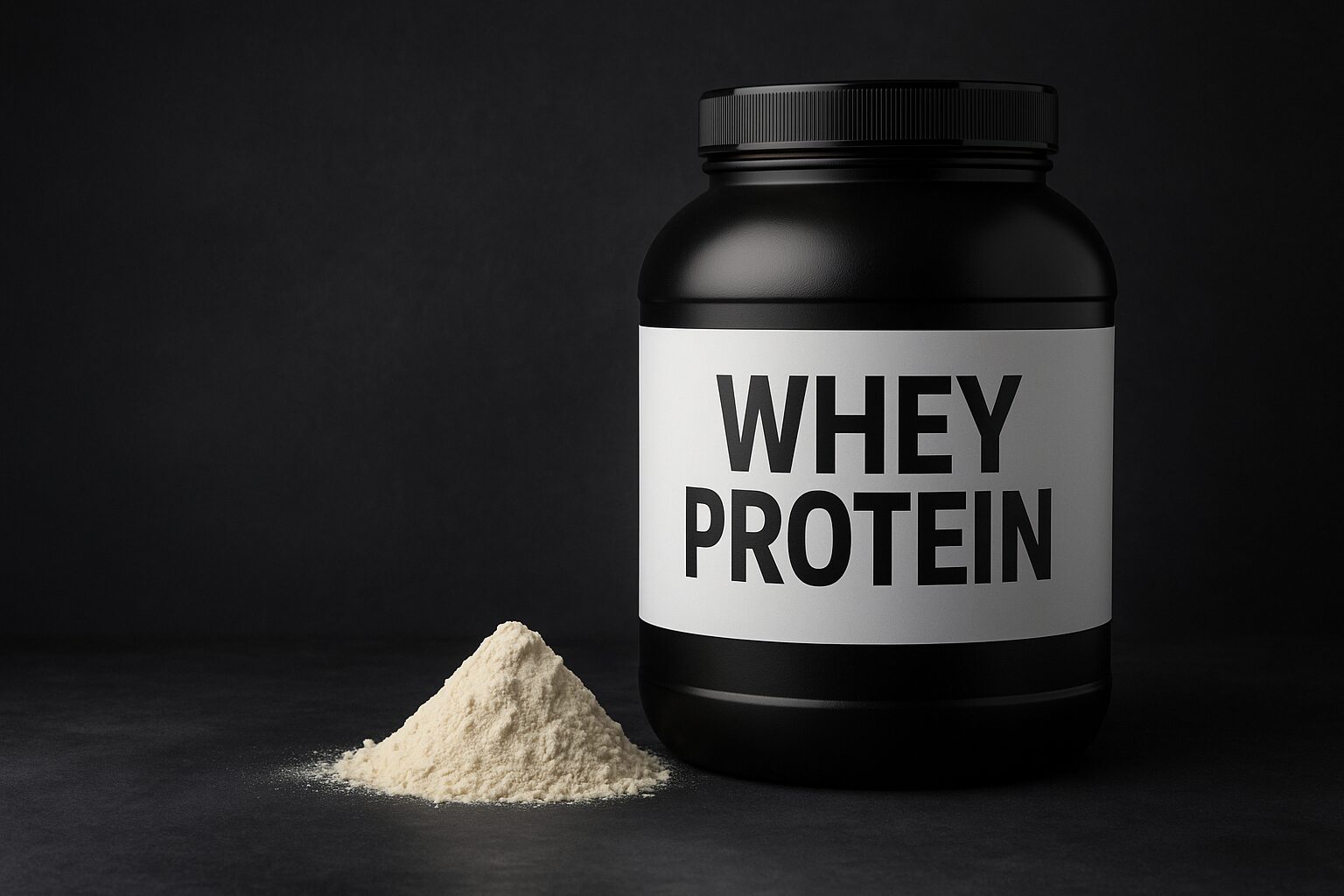
Introduction
The supplement industry is one of the most profitable sectors in modern fitness, generating over US$150 billion annually worldwide. Yet despite its massive growth, the scientific validity behind many of these products remains questionable.
Consumers are often caught between marketing promises and clinical reality — between the illusion of shortcuts and the evidence of physiology.
Supplements are not magic. They are tools, and tools only matter when they are applied correctly. Understanding which compounds actually work — and under what conditions — is essential to optimize both performance and health. The goal of this article is not to sell hope, but to separate biochemical fact from commercial fiction.
The Evidence-Based Framework
When evaluating any supplement, three criteria must be met before it can be considered effective:
- Mechanistic plausibility — Does the supplement have a clear physiological mechanism?
- Clinical validation — Have double-blind, placebo-controlled trials confirmed its efficacy?
- Reproducibility and safety — Are effects consistent and sustainable without toxicological risk?
This hierarchy of evidence, established by researchers such as Cochrane and the NIH Office of Dietary Supplements, allows a rational classification of what truly works. Supplements that fail to meet these standards belong in marketing, not medicine.
Creatine Monohydrate: The Gold Standard
Few compounds have been studied as thoroughly as creatine monohydrate. Meta-analyses show consistent improvements in muscular power output, lean mass, and anaerobic performance. According to Kreider et al. (Journal of the International Society of Sports Nutrition, 2017), creatine is “the most effective ergogenic nutritional supplement currently available.”
Creatine increases phosphocreatine stores in muscle, accelerating ATP resynthesis during high-intensity effort. The effect is particularly relevant for strength athletes and sprinters.
Despite myths, long-term studies have shown no adverse effects on kidney or liver function in healthy individuals.
Caffeine: A Cognitive and Physical Enhancer
Caffeine acts as an adenosine receptor antagonist, reducing fatigue perception and enhancing motor unit recruitment.
Research from the European Food Safety Authority (EFSA, 2020) confirms that 3–6 mg/kg of caffeine enhances endurance, power, and alertness.
Its synergy with catecholamine release explains its widespread use as both a pre-workout stimulant and a mental performance booster.
Tolerance can develop over time, however. For optimal results, cycling caffeine intake and avoiding chronic overuse are key to maintaining sensitivity and preventing adrenal exhaustion.
Protein Supplementation: Practical, Not Magical
Whey, casein, and plant-based protein powders are nutritional tools, not pharmacological agents.
A meta-analysis by Morton et al. (British Journal of Sports Medicine, 2018) concluded that protein supplementation enhances muscle hypertrophy only when total daily protein intake is suboptimal.
In short: supplements help meet requirements; they do not surpass them.
Whey remains superior in leucine content and absorption rate, making it ideal post-training. Casein, being slower to digest, supports overnight recovery. Plant proteins (soy, pea, rice) can be equivalent when consumed in sufficient quantities and amino acid completeness.
Beta-Alanine: The Buffering Agent
Beta-alanine combines with histidine to form carnosine, an intracellular buffer that delays muscular acidosis.
Multiple studies (Hobson et al., Amino Acids, 2012) confirm significant benefits for high-intensity efforts lasting 60–240 seconds, such as sprinting and combat sports.
The most common side effect is paresthesia — a harmless tingling sensation caused by transient nerve activation.
While not essential for strength athletes focusing on single lifts, beta-alanine is highly effective for repeated, near-maximal bouts.
Citrulline Malate: Pump with Purpose
Citrulline malate increases nitric oxide (NO) production and improves blood flow, thereby enhancing nutrient delivery and reducing fatigue.
A 2016 systematic review (Journal of Strength and Conditioning Research) observed improvements in repetition volume and perceived exertion.
Unlike arginine, which is largely metabolized by the liver before reaching systemic circulation, citrulline bypasses this pathway and delivers more consistent NO elevation.
The optimal dose appears to be 6–8 grams approximately 30–45 minutes pre-training.
Omega-3 Fatty Acids: Beyond Cardioprotection
EPA and DHA, the long-chain omega-3 fatty acids found in fish oil, exert anti-inflammatory and neuroprotective effects.
Meta-analyses indicate benefits for joint health, cognition, mood regulation, and muscle recovery.
Smith et al. (FASEB Journal, 2011) showed that omega-3 supplementation enhances muscle protein synthesis and anabolic signaling in older adults.
The evidence is so robust that omega-3s are now considered foundational rather than optional.
Typical dosages range from 1–3 g of combined EPA + DHA daily.
Vitamin D: The Modern Deficiency
Vitamin D functions as a secosteroid hormone, regulating over 200 genes.
Low levels correlate with reduced testosterone, immune dysfunction, and impaired recovery.
Pilz et al. (Molecular Nutrition & Food Research, 2019) emphasize that maintaining serum 25(OH)D levels above 30 ng/mL is crucial for athletic and metabolic health.
Sunlight remains the most natural source, but supplementation between 2000–5000 IU/day is often necessary, especially in winter or indoor populations.
Magnesium and Zinc: The Overlooked Duo
Both minerals are essential cofactors for hundreds of enzymatic reactions, including those governing testosterone synthesis and mitochondrial energy.
A deficiency in magnesium can blunt insulin sensitivity, while zinc deficiency reduces LH stimulation in the testes.
While supplementation benefits those with poor dietary intake, excessive doses offer no advantage and may cause toxicity.
Balanced nutrition remains superior to indiscriminate pill consumption.
Ashwagandha: The Adaptogenic Bridge
Derived from Withania somnifera, ashwagandha has been shown in several randomized trials to reduce cortisol and enhance strength.
A 2015 study published in the Journal of the International Society of Sports Nutrition reported increases in testosterone levels, muscle size, and power output following eight weeks of supplementation.
The mechanism appears to be dual: improved stress tolerance and enhanced hypothalamic-pituitary function.
As a natural adaptogen, its effects are subtle but real when used consistently.
Rhodiola Rosea: Energy from Adaptation
Rhodiola’s main active compounds, rosavins and salidroside, modulate the hypothalamic-pituitary-adrenal (HPA) axis, improving stress resilience.
Research published in Phytomedicine (2010) demonstrated improved cognitive performance and reduced fatigue under stress.
However, its effects plateau quickly with chronic use; periodic cycling is advised.
Nitrates and Beetroot Extract
Dietary nitrates, abundant in beetroot, convert into nitric oxide, improving vascular function and endurance performance.
A 2021 meta-analysis in Nutrients confirmed moderate but consistent improvements in time-to-exhaustion and oxygen efficiency.
Unlike many “pump” products, this effect is mechanistically validated and dose-dependent.
HMB (β-Hydroxy β-Methylbutyrate)
HMB is a leucine metabolite proposed to reduce muscle breakdown.
While initial studies suggested anabolic potential, later trials revealed only modest effects in untrained individuals.
A comprehensive review in Applied Physiology, Nutrition, and Metabolism (2019) concluded that HMB offers limited benefit for trained populations.
In summary: useful for rehabilitation or beginners, not for experienced athletes.
Branched-Chain Amino Acids (BCAAs)
BCAAs — leucine, isoleucine, and valine — gained popularity for muscle recovery.
However, evidence from Wolfe (Journal of the International Society of Sports Nutrition, 2017) indicates that isolated BCAA intake does not enhance muscle protein synthesis unless total dietary protein is inadequate.
Full amino acid profiles outperform partial supplementation every time.
Glutamine: Overrated Recovery Agent
Although glutamine is the most abundant amino acid in the human body, supplementation has shown little to no benefit for muscle recovery in healthy individuals.
Clinical benefits are restricted to critical illness, gut repair, and immune modulation.
For athletes, its ergogenic reputation is largely unsupported by current evidence.
Fat Burners and Thermogenics
Most “fat burners” rely on stimulants such as caffeine, synephrine, or yohimbine.
While they may increase acute energy expenditure, long-term fat loss still depends on caloric deficit.
A 2020 review in Obesity Reviews concluded that no thermogenic supplement provides clinically significant fat loss independent of diet and exercise.
Marketing often exceeds metabolism.
BCAA vs. EAA: The Essential Truth
Recent studies emphasize that essential amino acids (EAAs) outperform BCAAs in promoting muscle protein synthesis.
EAAs provide the full substrate required for tissue repair.
This distinction highlights the need for complete nutrition rather than partial fixes — another example of evidence defeating hype.
Collagen Peptides: More Than Skin Deep
Collagen supplementation has gained attention for joint and tendon health.
Zdzieblik et al. (American Journal of Clinical Nutrition, 2017) found improvements in collagen synthesis and reduced joint pain in active individuals.
The mechanism depends on providing glycine and proline — amino acids often underrepresented in modern diets.
Though not anabolic in the muscular sense, collagen supports the connective tissue that allows muscles to perform.
Multivitamins: Insurance, Not Investment
For individuals with restricted diets, multivitamins serve as nutritional insurance.
However, studies such as the Physicians’ Health Study II (JAMA, 2012) show no reduction in all-cause mortality from multivitamin use.
They fill gaps but do not enhance performance or longevity.
Nutrition should come from food; supplements should bridge, not replace, it.
Pre-Workout Formulas: Stimulants and Placebos
Most commercial pre-workouts combine caffeine, beta-alanine, and sometimes creatine — ingredients already discussed.
What differentiates them is marketing, not molecular innovation.
While some provide an acute focus and energy surge, others rely on under-dosed ingredients and proprietary blends.
Evidence favors individual supplementation over complex, overpriced mixes.
Probiotics: The Gut-Brain Axis
The gut microbiome affects metabolism, immune function, and hormonal balance.
Certain probiotic strains (e.g., Lactobacillus plantarum, Bifidobacterium breve) may improve nutrient absorption and inflammation control.
However, effects are strain-specific and highly variable.
More research is needed before general claims about “gut health” can be made with confidence.
The Placebo Industry
Psychological expectation can induce real physiological outcomes — a phenomenon well documented in sports science.
Belief can improve motivation and perceived effort, yet relying on placebo rather than physiology is unsustainable.
The body respects biochemical truth, not branding.
The Problem with Over-Supplementation
Excessive supplementation can cause micronutrient imbalance, organ stress, or hormonal disruption.
Even natural substances can become toxic when overused — iron, vitamin A, or selenium being prime examples.
More is not better; enough is optimal.
Individual Response and Genetic Variability
Polymorphisms in genes such as CYP1A2 (caffeine metabolism) or AGAT (creatine synthesis) explain why some individuals respond better to specific supplements.
Genetic and lifestyle differences must be acknowledged before universal recommendations are made.
The Economic and Ethical Perspective
The supplement industry often exploits confirmation bias — showing isolated studies while ignoring contradictory data.
Consumers must learn to differentiate between scientific consensus and selective citation.
True science is cumulative, not commercial.
Toward a Rational Supplement Strategy
The hierarchy of efficacy becomes clear:
- Strong Evidence: Creatine, caffeine, protein (context-dependent), omega-3s, vitamin D, citrulline, beta-alanine
- Moderate Evidence: Ashwagandha, Rhodiola, magnesium, zinc, collagen
- Weak or Conditional Evidence: HMB, glutamine, fat burners, isolated BCAAs, proprietary blends
Everything else belongs to marketing mythology.
Conclusion: The Science over the Sale
Supplements cannot replace training, nutrition, or discipline.
They refine the margins of performance — they do not define it.
Used intelligently, a handful of compounds can amplify results; used blindly, they empty wallets and compromise health.
The scientific method remains the only trustworthy compass in a market ruled by hype.
Every substance must be judged not by its label, but by its evidence.
Each supplement discussed here will be analyzed in detail in its own dedicated post, where Forge Biology will explore its mechanisms, optimal dosage, and best applications — separating the science that works from the marketing that doesn’t.
Forge Your Mind. Build Your Biology.
Join the Forge Biology newsletter — where science meets strength.
Every week, you’ll get:
-
Evidence-based insights on training, performance, and recovery
-
Real analyses of supplements that work (and the ones that don’t)
-
Deep dives into hormones, nutrition, and human optimization
No fluff. No marketing hype. Just data-driven knowledge to build a stronger body — and a sharper mind.
Subscribe now and start mastering your biology.
